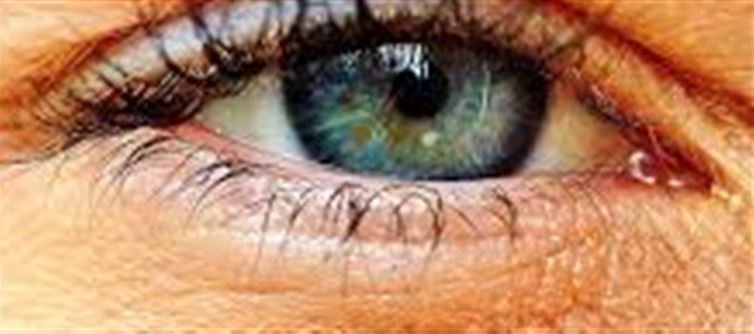
The kidneys play a crucial role in maintaining overall health by filtering waste, excess fluids, and balancing minerals in the body. When the kidneys begin to fail, several symptoms may emerge, and surprisingly, some of these can be seen in your eyes. Being aware of these early signals can help you seek timely medical intervention.
Here’s how kidney problems may manifest through your eyes, and what to watch out for:
1. Swelling Around the Eyes (Puffy Eyes)
· What It Means: One of the first visible signs of kidney failure could be swelling around the eyes. The kidneys are responsible for removing excess fluid and waste from the body. If they are not functioning properly, fluid retention occurs, often leading to puffy eyes or dark circles.
· Why It Happens: When the kidneys fail to filter waste, excess fluid accumulates in the body, and this fluid can gather around the eyes, leading to noticeable puffiness.
2. Yellowing of the Eyes (Jaundice)
· What It Means: Jaundice, or the yellowing of the skin and eyes, can indicate a severe problem with kidney function. If kidney failure leads to a buildup of waste products in the blood, it can affect the liver, causing bilirubin (a waste product) to accumulate.
· Why It Happens: The kidneys are responsible for filtering out toxins, including bilirubin. If they aren’t working properly, bilirubin builds up in the bloodstream, causing the sclera (white part of the eyes) to turn yellow.
3. Blood in the Eyes (Hemorrhages or Redness)
· What It Means: The appearance of bloodshot eyes or sudden red streaks in the eyes can be an indication of kidney damage or even kidney failure. This could be caused by an increase in blood pressure, which is common in individuals with kidney disease.
· Why It Happens: Kidney failure can cause high blood pressure, which in turn can cause blood vessels in the eyes to rupture, leading to red or bloodshot eyes. This is often a sign of severe kidney damage.
4. Blurry Vision or Vision Loss
· What It Means: Kidney disease can lead to diabetic retinopathy or other vision issues that result in blurry vision or even partial vision loss. High blood sugar from diabetes or high blood pressure from kidney disease can cause damage to the blood vessels in the eyes.
· Why It Happens: Poorly managed kidney disease often leads to high blood pressure and diabetes, both of which can damage the retina of the eye, leading to vision problems.
5. Light Sensitivity
· What It Means: Sensitivity to light, or photophobia, may arise as a result of kidney disease, particularly if it is accompanied by headaches and vision blurriness. It can also indicate kidney-related conditions that are affecting the nervous system.
· Why It Happens: Kidney failure may disrupt the balance of essential nutrients in the body, including those necessary for eye health, leading to increased sensitivity to light.
6. Dry Eyes
· What It Means: Dry eyes, or the sensation of gritty or itchy eyes, can sometimes signal kidney dysfunction. Kidney disease can affect the balance of fluids in the body, leading to dry or irritated eyes.
· Why It Happens: The kidneys are responsible for regulating the body’s fluid balance. If they are not functioning correctly, it can lead to dehydration, which in turn can dry out the tear glands, causing discomfort in the eyes.
7. Dark Circles or Spots in the Eyes
· What It Means: Dark circles under the eyes or the appearance of floaters (dark spots in vision) can indicate kidney trouble. The kidneys regulate waste and fluid, and improper functioning can lead to these symptoms.
· Why It Happens: Poor kidney function often results in poor blood circulation, leading to dark circles or eye floaters. This could be due to a buildup of toxins or poor oxygenation of the eye tissues.
When to See a Doctor?
If you notice any of these symptoms, it's essential to take them seriously and consult a healthcare provider. Early detection and treatment of kidney problems can prevent further complications, including kidney failure.
· What to Look Out For:
o Puffy or swollen eyes, especially in the morning.
o Yellowing of the eyes or skin.
o red, bloodshot, or streaked eyes.
o Blurred or decreased vision.
o Sensitivity to light or eye discomfort.
o Persistent dry eyes.
o Dark spots or floaters in the vision.
How to Protect Your Kidney Health
· Stay Hydrated: Drink plenty of water to help your kidneys flush out toxins.
· Monitor Blood Pressure: Keep an eye on your blood pressure, as high blood pressure is a leading cause of kidney disease.
· Control Blood Sugar: If you have diabetes, manage your blood sugar levels to prevent kidney damage.
· Limit salt Intake: A high-sodium diet can strain the kidneys, so reducing salt can help.
· Get Regular Check-ups: Regular kidney function tests, such as blood tests and urine tests, can catch problems early.
Conclusion:
Your eyes can be a window to your kidney health, offering important clues about potential issues. If you notice any unusual changes in your eyes, especially if you have a history of high blood pressure or diabetes, it’s crucial to seek medical advice. Early detection and lifestyle adjustments can significantly improve kidney function and prevent further complications.
Disclaimer:
The views and opinions expressed in this article are those of the author and do not necessarily reflect the official policy or position of any agency, organization, employer, or company. All information provided is for general informational purposes only. While every effort has been made to ensure accuracy, we make no representations or warranties of any kind, express or implied, about the completeness, reliability, or suitability of the information contained herein. Readers are advised to verify facts and seek professional advice where necessary. Any reliance placed on such information is strictly at the reader’s own risk..jpg)




 click and follow Indiaherald WhatsApp channel
click and follow Indiaherald WhatsApp channel